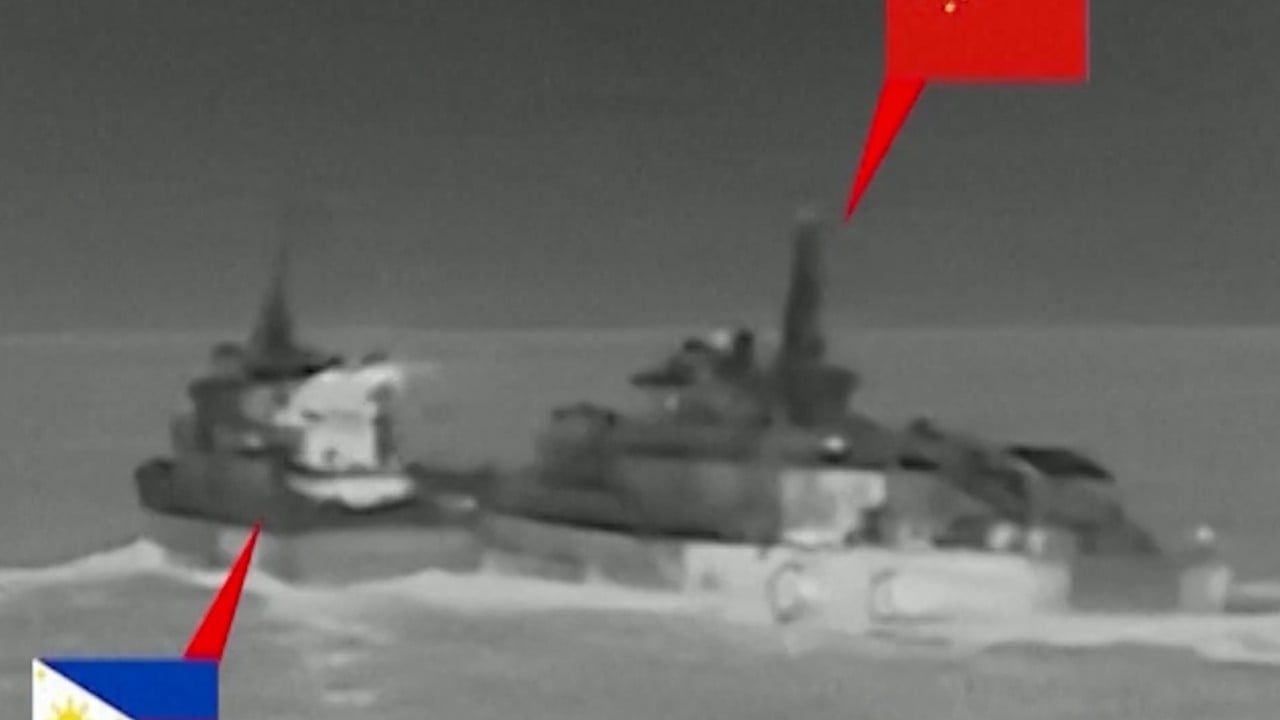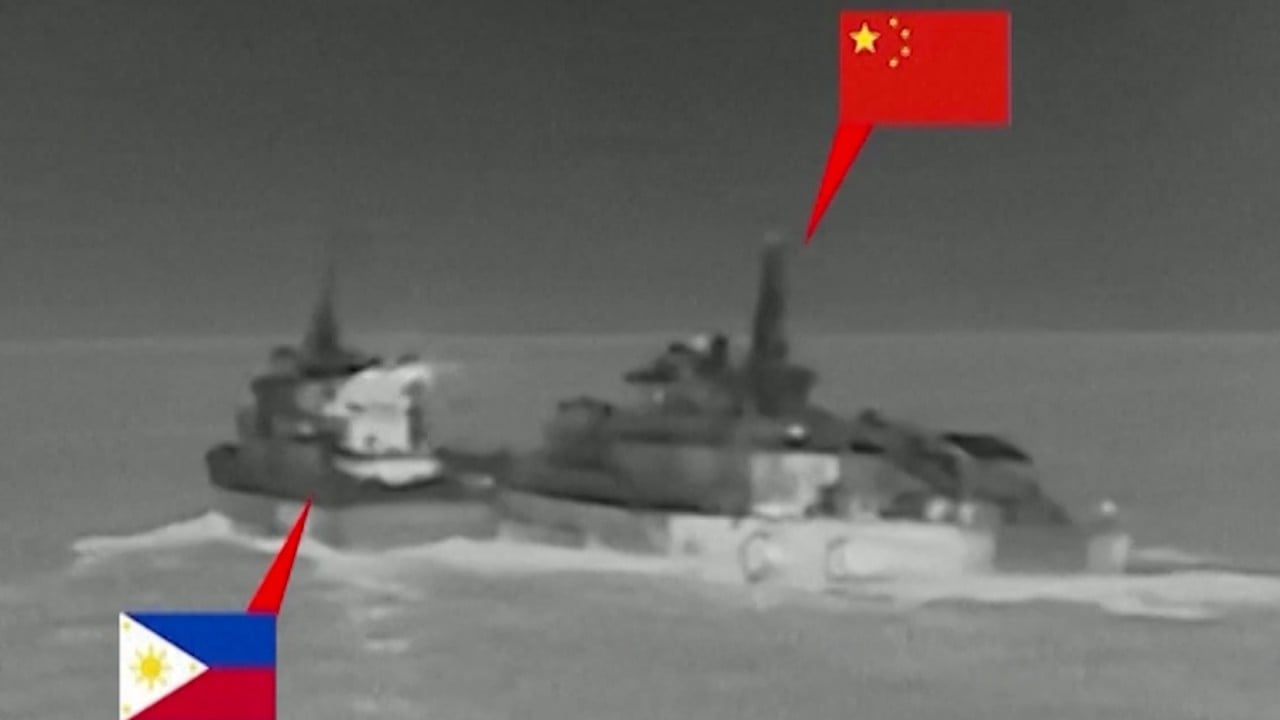The Philippines’ transparency overdrive and alliance build-up to deter China in the West Philippine Sea have earned praise and rebuke. How does the strategy measure up against desired results? What did it achieve and is it due for calibration?
Under President Ferdinand Marcos Jnr, the Philippines pursued a new approach in the maritime hotspot. Manila adopted a transparency initiative to expose China’s grey zone actions that have disrupted regular economic and security activities around the Southeast Asian country’s administered features and waters in its western exclusive economic zone. By naming and shaming Beijing, the intention was that reputational costs would compel China to change course. This did not materialise. While Beijing may have been initially caught off guard by the new approach, it soon adjusted and brought its cameras, videos, and narratives to refute and counter Manila’s campaign.
Another factor in the equation was the deepening alliance between the Philippines and its partners, such as the US. American military access was expanded, and US missiles were deployed on Philippine soil. A pact that facilitated joint training with Japan was signed, and a similar deal with France is under consideration. Combined military exercises with allies and partners got bigger, bolder and more frequent. The theory was that such activities and posturing would discourage further Chinese intrusions. This assumption did not hold, either. Beijing became the uninvited observer of such multilateral naval exercises, daringly trailing allied sails in the South China Sea and even conducting concurrent manoeuvres on its own or with Russia in response.
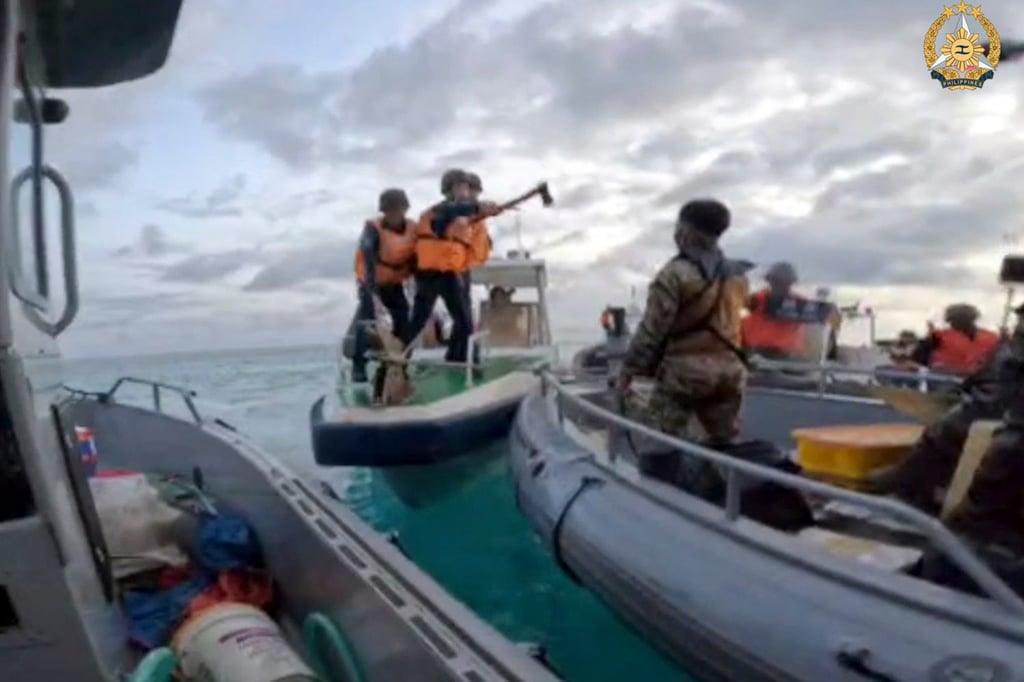
Far from easing tensions, mutual recriminations heightened the temperature in choppy waters. Both sides pandered to their domestic base. Maritime incidents worsened alarmingly, ranging from the use of lasers, dangerous manoeuvres, ship collisions, and water-cannon blasting to a physical scuffle that resulted in injuries to sailors. Flashpoints flared up at the Second Thomas, Scarborough, and Sabina Shoals. Chinese vessels sighted in Philippine waters increased. Beyond the West Philippine Sea, they were also spotted in the Philippine Sea in the east and Basilan and Sibutu Straits in the south. Close calls also occurred in the sky, with People’s Liberation Army aircraft dropping flares in the path of a Philippine Air Force plane patrolling in the vicinity of Scarborough Shoal.
Transparency can be a useful tactic, and Manila is not the first to employ it in the South China Sea. But there is a difference between exposing a rival for exposure’s sake and calculated exposure as diplomatic leverage. The former aims to inflict open-ended maximum reputational cost without creating pathways for de-escalation. The second is more restrained, incident-specific, and opens doors for off-ramps to cool tensions.
At present, activities in the South China Sea would not go unnoticed. Air and sea patrols and commercial satellite solutions can easily reveal reclamation work, militarisation of occupied features, or congregations of vessels. Even the movement of ships that turn off their automatic identification systems at night can be tracked.
Coastal states now have access to more information, which can be leveraged for diplomatic protests or negotiations. Sharing or leaking this information to the public and media has become a useful card to be played sparingly to illustrate a point or elicit a desired reply. Dangling the prospect of using such a card may also have more value than putting it on the table.
There is a trade-off between exposure and diplomacy. The more public sea incidents become, the more difficult they are to manage. They can easily become crises, which further narrows room for compromise. There is no established correlation between transparency and good diplomatic outcomes. Diplomacy is typically done behind the scenes due to its sensitive nature. Discreet talks may achieve more results than unbridled noise. On matters of national security, reputational costs carry less weight.
But noise has its purpose. It galvanised international backing for the landmark 2016 arbitration award that Manila won. Washington and its allies become more invested in Philippine security. The hope is that the Philippines can be more than just a flourishing arms market for foreign defence contractors. Support for the country’s multi-year military modernisation could translate into favourable deals and help spur local industries like shipbuilding and aircraft maintenance, repair, and overhaul. The country’s Self-Reliant Defence Posture Programme to produce more domestically made arms could get a boost.
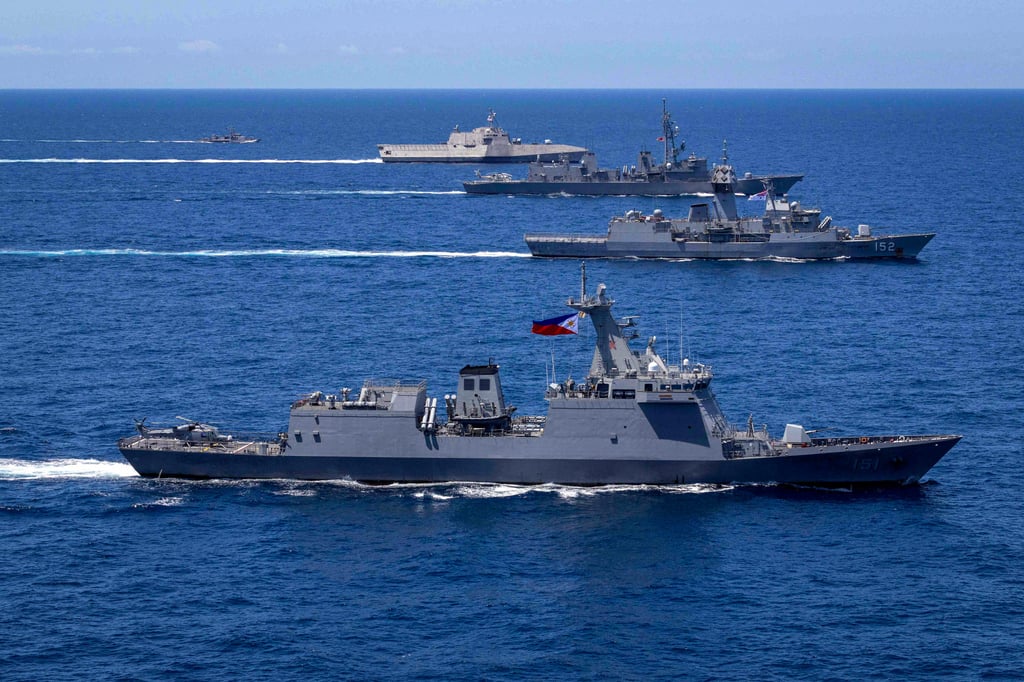
Vessels and aircraft from Manila’s allies and partners can be reassuring. But they can also congest contested spaces and increase the chance of accidents. While they may be useful to challenge excessive and unlawful sea claims and dangerous conduct, they cannot be relied upon to conduct routine sovereign actions like Manila’s patrols and resupply sorties. Their deployment may also hinge on the policy of their home countries, which may shift due to leadership changes.
Pressure from China could also accelerate efforts to diversify the country’s economy. American and Japanese investments in the Luzon Economic Corridor have the potential to be transformative. But it would take more than sympathy, solidarity, and like-mindedness to attract foreign investment. Vietnam is gaining more from de-risking than the Philippines through capital inflows from both East and West. Political stability, policy continuity, and competitiveness remain more important considerations.
Direct and regular dialogue, high-level visits, and fostering friendly relations with China do not undermine Manila’s position in the maritime dispute. Major strides in defence modernisation and infrastructure upgrades on Pag-Asa island and at other Philippine-held features in the Spratlys happened during the previous administration of Rodrigo Duterte when ties with China were warm. Filipino fishermen returned to Scarborough Shoal. Repairs on a grounded naval ship outpost in Second Thomas Shoal were made.
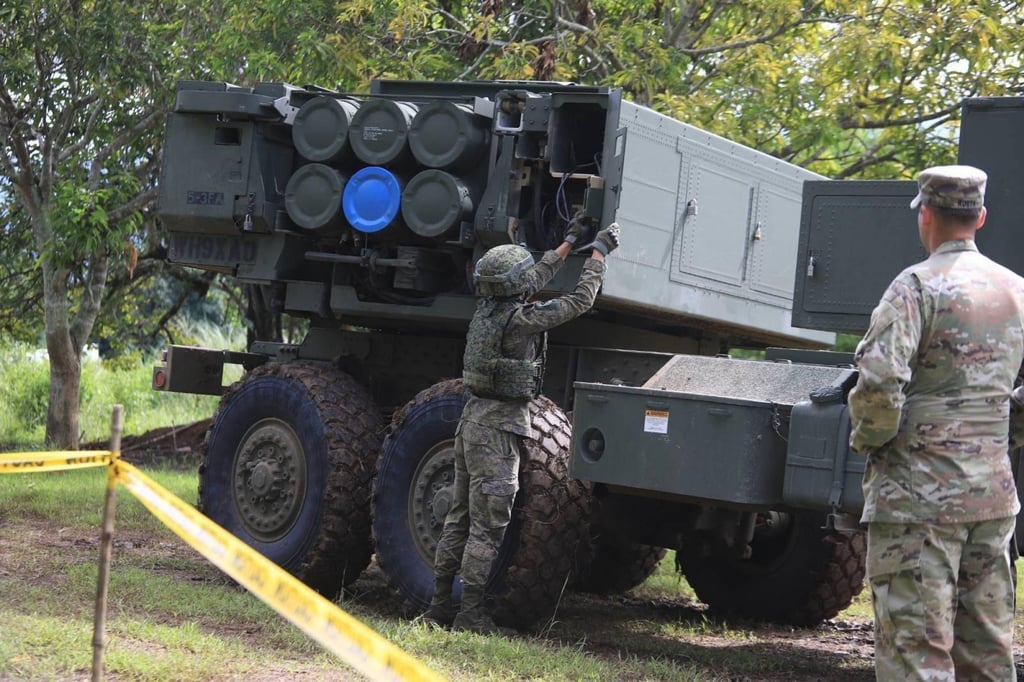
Now, even with the transparency overdrive and alliance build-up – or because of it – Manila struggles to resupply troops stationed at the BRP Sierra Madre on Second Thomas Shoal. Meanwhile, Vietnam is on a reclamation spree, with no reported disruption from China. The first overseas stop of the new Vietnamese top leader To Lam was Beijing. While the Philippines faces a looming energy crisis with the exhaustion of its biggest natural gas field Malampaya, drilling in nearby Reed Bank remains elusive. Progress in Malaysia’s Kasawari gas field in Luconia Shoal off Sarawak may offer crucial lessons for the Philippines, as Manila aims to harness offshore petroleum resources coveted by China.
Transparency and alliance build-up are useful tools to defend Philippine maritime interests. But Manila should have a realistic view of what it can deliver and its limits. Investing in defence and deterrence alone is not enough. They should be complemented by dialogue and diplomacy.
Lucio Blanco Pitlo III is President of the Philippine Association for Chinese Studies and Research Fellow at the Asia-Pacific Pathways to Progress Foundation


